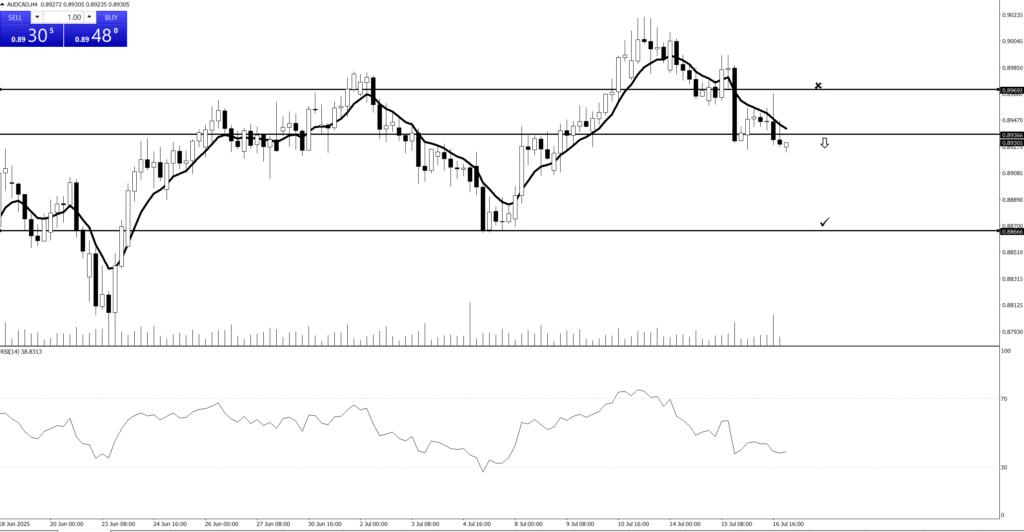7. The Power of Hikkake


Alright, market adventurers, we’ve talked about the shy little Inside Bar – that introvert who just wants to chill within the shadow of its big Mother Bar. But what happens when that little wallflower suddenly decides to make a dramatic, deceptive move?
Get ready to meet the market’s most mischievous trickster, the stealthy ninja of candlestick patterns, the one that makes other traders scream, “Aha! Gotcha!”… only to find they are the ones who got played! Prepare yourselves for the cunning, the deceptive, the utterly brilliant power of the Hikkake Pattern!
The Hikkake: The Market’s “Got Your Nose!” Moment!
Imagine this: You’re at the bustling La Boqueria market here in Barcelona (it’s a glorious Sunday, July 6th, 2025, after all!). You see a vendor set up a stall with the most amazing, glistening jamón. Then, a smaller, more hesitant vendor sets up inside their space – that’s our Inside Bar (the little shy one).
Now, suddenly, the smaller vendor (the inside bar) makes a bold move! They stick their arm just past the big vendor’s display, enticing customers, making it look like they’re about to break out and steal all the business! Other traders (the unwary) shout, “Aha! They’re going big! Let’s follow them!” and jump in that direction.
But then, POOF! The little vendor’s arm snaps back! They didn’t really break out! They just pretended to, and now they’re back, tucked inside the Mother Bar’s range. The customers who followed them are now standing there, confused, with empty baskets. And the original big vendor just smirks.
That, my friends, is the Hikkake in action!
It starts with an Inside Bar: Our little shy candle, nestled comfortably within the previous, larger “Mother Bar.”
Then, the “Fake-Out Feather Duster”: The very next candle (the Hikkake candle) tries to break out! It’ll either make a new high (trying to go up, a bullish Hikkake) or a new low (trying to go down, a bearish Hikkake) beyond the Mother Bar’s range…
…BUT IT FAILS TO CLOSE OUTSIDE! It quickly snaps back, closing inside the Mother Bar’s range (or sometimes even closing back inside the Inside Bar’s range).
The Follow-Through: The next candle after that often takes off sharply in the opposite direction of the failed breakout attempt!
The very name “Hikkake” is Japanese for “to hook, to ensnare, to trick.” And that’s exactly what it does!
Why This Sneaky Scamp Is Your Secret Weapon!
The Hikkake isn’t just a quirky pattern; it’s a profound market psychology signal!
The Trapped Trader’s Lament: When the Hikkake happens, it means a bunch of impatient traders jumped into what looked like a breakout, only to find themselves instantly TRAPPED! If they bought the failed high, they now have a losing position. To get out, they’ll have to sell. If they sold the failed low, they’re trapped and will have to buy back.
Fuel for the Fire: These trapped traders, trying to escape their bad positions, create a surge of orders in the opposite direction of their initial mistake. This sudden rush of selling (if they were trapped buying) or buying (if they were trapped selling) becomes the rocket fuel for the Hikkake’s real move!
The Spring-Loaded Reversal/Continuation: Because the market failed to break out in one direction, it reveals underlying weakness (if it failed to go up) or strength (if it failed to go down). The Hikkake often signals a powerful reversal or a strong continuation of the original trend that the inside bar was pausing within.
So, the next time you see an Inside Bar, and then the very next candle tries to peek its head out but quickly snaps back in, don’t be fooled! That’s the Hikkake loading its slingshot. Get ready to pivot and ride the wave created by all the traders who just got tricked! It’s the market’s playful way of saying, “Gotcha! Now here’s the real direction!”
💰Quotes:
“Enter the trade — then sit on your hands like a monk!”
“We don’t click and panic. We click and chill.”
“Traders who wait, get paid. Traders who fidget… donate!”
“We enter the trade, then do absolutely nothing like pros.”
“Let the market work. You’re not its boss.”
💰Normal Tone Slogans:
“Enter with a plan, then let the trade play out.”
“The work is in the setup — the result comes with patience.”
“We don’t babysit trades. We trust our edge.”
“Entry is action. Waiting is discipline.”
“After entry, emotion has no place — only patience.”

Alright, let’s talk about the Hikkake pattern. Now, if you’re picturing some kind of exotic dance move or a fancy new sushi roll, you’re not entirely wrong on the “fancy” part, but it’s actually a sneaky little setup in the world of stock charts.
So, What in the Charting World is a Hikkake?
Imagine you’re at a party, and that one friend — you know the type — says they’re totally leaving. They grab their coat, wave goodbye, maybe even step out the door. You think, “Okay, they’re gone.” But then, just when you’ve settled back in, BAM! They’re back, usually with a mischievous grin and a new drink.
That, my friends, is essentially the Hikkake pattern in a nutshell.
In trading terms, it’s when the price of an asset looks like it’s going one way (like your friend leaving the party), but then it whips around and confidently heads in the opposite direction (your friend suddenly reappearing, ready to party even harder). The word “Hikkake” itself is Japanese and means “to trick,” “to ensnare,” or “to trap.” So, it’s literally the market playing a little prank on you.
The Anatomy of This Charting Prankster
A Hikkake isn’t just any old U-turn. It’s got specific tell-tale signs, like a bad actor trying to pull off a disguise:
The “Fake Out” Candle: First, you see a candle that closes outside the range of the previous candle. This is your friend getting up, grabbing their coat, and making a big show of saying goodbye. If it’s going up, it’s a bullish “fake out.” If it’s going down, it’s a bearish one. This candle screams, “I’m heading THIS way!”
The “Oh Wait, Never Mind” Candle(s): Then, for one or more subsequent candles, the price doesn’t follow through. Instead, it gets all wishy-washy and trades within the range of that big “fake out” candle. It’s your friend lingering at the door, checking their phone, maybe tying their shoe. They’re not committed to leaving.
The “Surprise! I’m Back!” Candle: This is the magic. The next candle breaks outside the range of the “fake out” candle, but in the opposite direction of the initial move. Your friend suddenly bursts back into the room, probably yelling, “Who’s up for karaoke?!” This is the actual signal to trade!
Why Does the Market Play Such Games?
Well, the market loves to mess with people. But in a more serious (and less funny) sense, it’s often due to:
Trapping Early Birds: Traders who jumped on the initial “fake out” move get caught off guard.
Liquidity Grabs: Big players might be deliberately pushing the price one way to trigger stop losses or attract fresh orders, only to reverse course and scoop up those positions.
Momentum Shifts: Sometimes, the initial momentum just fizzles out, and the opposite side takes control.
So, the next time you see the price pulling a disappearing act only to pop back up with a vengeance, remember the Hikkake. It’s the market’s way of winking and saying, “Gotcha!” Just try not to fall for its tricks.
💰Quotes:
“Enter the trade — then sit on your hands like a monk!”
“We don’t click and panic. We click and chill.”
“Traders who wait, get paid. Traders who fidget… donate!”
“We enter the trade, then do absolutely nothing like pros.”
“Let the market work. You’re not its boss.”
💰Normal Tone Slogans:
“Enter with a plan, then let the trade play out.”
“The work is in the setup — the result comes with patience.”
“We don’t babysit trades. We trust our edge.”
“Entry is action. Waiting is discipline.”
“After entry, emotion has no place — only patience.”

💰Hikkake Slogans:
“Hikkake: The subtle trap that reveals smart entries.”
“When the market fakes you out, Hikkake points the way.”
“Hikkake pattern: Catch the false breakout before it fades.”
“Trade the Hikkake—where patience meets precision.”
“Hikkake setups filter noise to find real moves.”
“Master the Hikkake and spot traps like a pro.”
“In deception lies opportunity — that’s the Hikkake edge.”
“The Hikkake pattern turns fakeouts into winning trades.”
💰Funny Hikkake Slogans:
“Hikkake: When the market says ‘gotcha!’ but you say ‘gotcha back!’”
“That moment when the market fakes out everyone but you — Hikkake magic!”
“Hikkake: The price action ninja move traders love to hate.”
“False break? More like ‘false scare’ with Hikkake on your side.”
“Hikkake — because the market loves a good prank.”
“Got fooled? Not if you know the Hikkake handshake.”
“Hikkake pattern: The market’s way of saying ‘just kidding!’”
“If price action had a prankster, it’d be the Hikkake.”
💰🧲 The Power of the Hikkake Pattern in Trading
The Hikkake pattern is a powerful and subtle price action setup that traps amateur traders and gives professionals an edge. It’s a false breakout followed by a sharp reversal — perfect for catching liquidity and entering with the smart money.

💰🔍 What is the Hikkake Pattern?
The Hikkake setup usually forms like this:
An inside bar forms (price gets tight).
Price breaks out in one direction — looks like a breakout.
But then… price reverses back inside the range.
Then it breaks out in the opposite direction — the true move.

💰⚔️ Why is it Powerful?
🎯 It traps breakout traders — those who enter too early get stopped out.
🧠 It reveals smart money behavior — institutions often cause false moves to fill orders.
🔄 It offers high-probability reversals — you enter when the amateurs are caught off guard.
💸 Great risk/reward — entries are tight, and the real move tends to be strong.

💰📌 Example Setup:
Let’s say you have:
Inside bar on daily chart.
Price breaks above the high of the inside bar — traders go long.
Price quickly reverses back down, trapping them.
You sell when the low of the inside bar is broken.
This is the Hikkake — you’re trading against the trap, with the professionals.

💰🔧 Pro Tips:
Use on higher timeframes (4H, Daily) for stronger signals.
Add confluence: trend direction, key levels, or RSI divergence.
Great for swing trading with tight stop loss and clear target.

